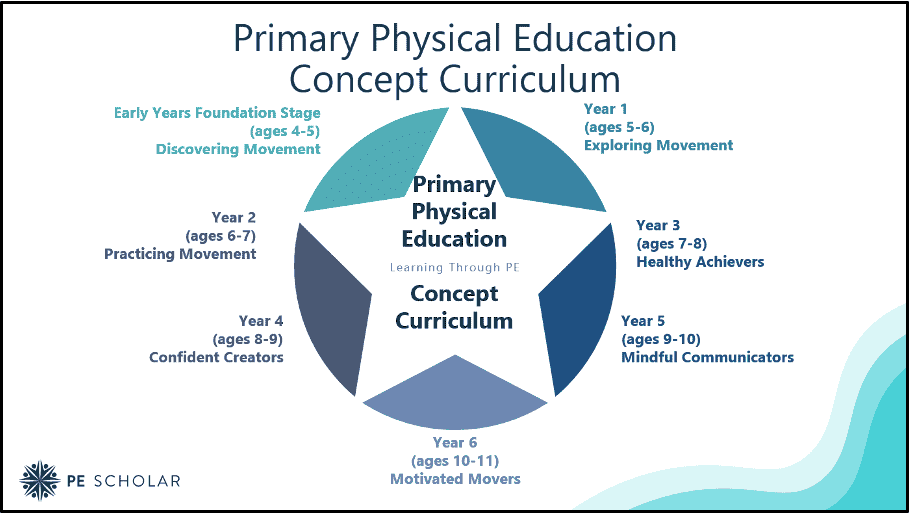
Introduction
In this unique educational experience, we’ll venture into the heart of Dino Island, where young explorers will not only learn about gymnastics but also discover how dynamic balance can be a real-life superpower. In this blog, and supporting video, our goal is not just to teach, but to transport our students into a world where learning is an exhilarating adventure.
Teachable Moments
Before we explore the lesson, I wanted to present to you a model that will support teachers knowing when to intervene in PE lessons – “teachable moments.” This concept is particularly helpful for primary teachers when deciding when to get involved and when to let students take the lead in PE.
Imagine a classroom scenario where a child is struggling with a task or another child seems bored because they’ve finished. In such cases, a teacher would step in to offer support or challenge. In PE, we can adopt a similar approach. Here are two types of teachable moments we should look for:
1. Targeted Learning
Targeted learning moments are those instances when a teacher interacts with a student or a small group. While the rest of the class continues their physical activities, the teacher briefly engages to provide guidance or feedback. This might include coaching points, concept reminders, or praising students for demonstrating specific skills. These interventions are small and focused, ensuring that the majority of students remain active.
2. Discussion Points
Discussion points are broader teachable moments that involve the entire class. These moments occur when the teacher needs to address common misconceptions, highlight exceptional learning examples, or emphasize key learning objectives. However, these should be used sparingly, as the goal is to keep students actively engaged for as long as possible.
Remember, the teacher’s role in PE is to facilitate learning, and teachable moments provide opportunities for timely guidance without interrupting the flow of the lesson.

Opportunities to Develop Physical Competence in the Lesson
Dynamic balance involves maintaining stability while in motion. It goes beyond simply standing still; it’s about coordinating multiple muscle groups to remain steady while moving. This skill may seem complex for young children, but it is vital for their physical development. Let’s explore why dynamic balance matters:
1. Motor Skill Development
Dynamic balance forms the foundation of motor skill development. It allows children to control their bodies while in motion, providing the coordination needed for various physical activities.
2. Core Strength
Maintaining dynamic balance engages and strengthens the core muscles. This not only enhances stability but also benefits children in a wide range of physical activities.
3. Preventing Falls
Teaching dynamic balance significantly reduces the risk of falls. When children learn how to control their bodies in motion, they are less likely to stumble or fall during play and sports.
4. Applicability across Activities
Dynamic balance is not confined to PE; it is a fundamental movement skill applicable across numerous activities. Whether in gymnastics, dance, or sports, the ability to control one’s body in motion is invaluable.
The Lesson Summary
Our trusty guide, the Dino Hunter, informs us of a looming disaster – the once-dormant volcano we’ve seen on the horizon has sprung to life! The eruption is imminent, and to survive, we need to rely on dynamic balance. The Dino Hunter explains what dynamic balances are and why they are vital for our safety. Following the LEAD framework, children navigate the story and explore various ways to demonstrate dynamic balances.
The floor is lava, and we must jump, leap, and hop to move from one piece of stable ground to another while maintaining stability. This challenge not only immerses our young adventurers in a thrilling adventure but also allows them to apply their newly acquired knowledge of dynamic balance.
Children will then be given the creative freedom to craft their dynamic balance sequences, encouraging them to experiment with various movements that enhance stability while in motion. This exercise sparks their imagination as they determine the most effective ways to maintain equilibrium during different activities. Through reflection and constructive feedback, children gain valuable insights into their own progress, fostering a deeper understanding of dynamic balances. This collaborative process not only strengthens their motor skills but also cultivates a sense of teamwork and self-awareness, preparing them for the challenges ahead.
Conclusion
As we conclude this lesson, our young explorers have experienced the practical applications of dynamic balance in an immersive story. They have not merely learned about dynamic balance; they have demonstrated it in action. The hands-on experience of traversing treacherous lava flows, leaping from one stable point to another, and maintaining stability as part of a self-created sequence has etched the significance of dynamic balance into their minds. It’s transformed from an abstract idea into a tangible tool they can wield in real-life situations.


Responses